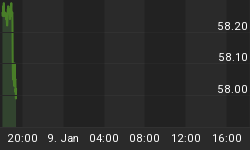From a seasonal point of view, the year is divided into 15 weeks with strong bullish bias, seven weeks with strong bearish bias, and the rest with a weak or mixed bias.
The first week with strong negative bias is behind us and all the major averages are in the red for the year:
Seasonality suggests, however, that several consecutive weeks with strong bullish bias are to follow and are likely to set the tone for the next couple of months. For the bullish case, it is critical that the indices manage to break above the January highs during that period. An inability to do so, coupled with the absence of strong bullish seasonal trends during the second half of February and the beginning of March, will suggest that the bear trend is here to stay for several months.
An easy way to monitor the trend is to follow the interaction between price and weekly trend bars. Designed specifically to eliminate noise from random price moves, trend bars provide a novel visual and technical approach to defining trend:

Chart courtesy of OT Seasonal
Combining trend bars with seasonality offers a simple but effective way to avoid losses and let winners run.
















